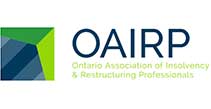 Declaring bankruptcy is a significant decision that comes with both emotional and financial considerations.
Declaring bankruptcy is a significant decision that comes with both emotional and financial considerations.
One of the most common questions people ask is, “How much does it cost to declare bankruptcy in Ontario?”
Understanding the costs involved can help you make an informed decision about whether bankruptcy is the right option for you.
Costs of Declaring Bankruptcy in Ontario
-
Initial Consultation Fee
- Most Licensed Insolvency Trustees (LITs) offer a free initial consultation. During this meeting, the trustee will assess your financial situation and discuss the available options, including bankruptcy. There is typically no cost for this consultation.
-
Administrative Fees
- The basic cost of filing for bankruptcy includes administrative fees. These fees cover the paperwork, filing, and administrative work that the LIT performs. The minimum administrative cost usually starts at around $1,800 for a first-time bankruptcy. This fee is often spread out over 9 to 21 months, depending on the terms of your bankruptcy agreement.
-
Surplus Income Payments
- If your income exceeds the government-set thresholds, you may be required to make surplus income payments. These payments are based on a portion of your income and can increase the total cost of your bankruptcy. The more you earn, the higher the surplus income payments. The LIT will calculate the amount you owe based on your monthly income and the size of your household.
-
Asset Contributions
- In some cases, you may be required to contribute assets to your bankruptcy estate. This could include non-exempt assets such as a second vehicle, valuable collections, or investments. The proceeds from these assets go toward paying off your creditors, but this is not a direct cost you pay out of pocket.
-
Counseling Sessions
- As part of the bankruptcy process, you must attend two financial counseling sessions. These sessions are designed to help you manage your finances better in the future and prevent you from falling into the same financial difficulties. The cost of these sessions is included in your administrative fees.
-
Additional Legal Fees (if applicable)
- In some cases, you may incur additional legal fees if there are complications during your bankruptcy, such as disputes with creditors or if you need to file a court motion. These fees are not common but should be considered if your bankruptcy situation is complex.
The hardest part for me was realizing that I needed help and making that first call. My credit was so bad, I had everything to gain, yes it hurt but I living without the stress and building a new future for myself and family. D.Drake Ajax
How Are Bankruptcy Costs Calculated?
The total cost of bankruptcy depends on several factors, including your income, assets, and whether you have been bankrupt before. Here’s how these factors influence the cost:
- Income: Higher income could lead to surplus income payments, increasing the total cost.
- Assets: Owning non-exempt assets might require you to contribute their value to the bankruptcy estate.
- Previous Bankruptcies: If you’ve declared bankruptcy before, the process could be longer and more expensive.
By understanding these variables, you can better anticipate the financial requirements and navigate the bankruptcy process with greater confidence.
Get Out of Debt Today!
Financial freedom starts with just one call.
Let us guide you towards a brighter future, free from the burden of debt.
Example of Bankruptcy Costs in Ontario
Let’s consider an individual named John, who is a first-time bankruptcy filer in Ontario. John’s monthly income is $3,800, and he lives alone. Below is a breakdown of the potential costs he could face, along with details about how long the bankruptcy process lasts and what happens at the end.
1. Administrative Fees
The basic cost of filing for bankruptcy includes administrative fees charged by the Licensed Insolvency Trustee (LIT). For John, the administrative fees are $1,800. These fees cover the trustee’s services, filing the necessary paperwork, and managing John’s bankruptcy process. John’s trustee allows him to pay these fees in instalments over the course of his bankruptcy, so he might pay $100 per month over 18 months.
2. Surplus Income Payments
The government-set threshold for a single person is $2,543 per month. John’s income is $3,800, which means he is $1,257 over the threshold. The rule is that John must pay 50% of his surplus income, which would be $628.50 per month. This payment will continue for 21 months, extending the duration of his bankruptcy due to the surplus income requirement, adding up to $13,198.50 over the period.
3. Counseling Sessions
John is also required to attend two mandatory financial counseling sessions. The cost for these sessions is typically included in the administrative fees, so no additional cost would be charged separately.
4. Asset Contributions
If John owns any non-exempt assets, such as a second vehicle or valuable investments, he might be required to surrender these assets to contribute to the bankruptcy estate. However, if all his assets are exempt (e.g., necessary clothing, a modest vehicle, basic household furnishings), he wouldn’t have to make additional contributions.
Total Monthly Payment
- Administrative Fees: $100 per month (for 18 months)
- Surplus Income Payments: $628.50 per month
- Total Monthly Payment: $728.50
How Long Does the Bankruptcy Last?
In John’s case, because he has surplus income payments to make, his bankruptcy will last for 21 months. If he did not have to make surplus income payments, the bankruptcy could potentially be discharged after 9 months. The duration of the bankruptcy is influenced by whether surplus income payments are required, among other factors.
What is a Bankruptcy Discharge
At the end of your bankruptcy your given a “Bankruptcy Discharge“. The discharge is a legal release from the obligation to repay your debts.
Once John completes his bankruptcy and fulfills all the necessary requirements, including making his surplus income payments for 21 months, he will receive his discharge. This discharge means that John is no longer legally required to pay the debts that were included in his bankruptcy.
After receiving his discharge, John will be free of all eligible debts, providing him with a fresh financial start. This process allows individuals like John to rebuild their financial health and credit without the burden of past debts. It’s important to note that while most debts are discharged, certain debts—such as student loans under specific conditions, fines, or child support payments—may not be discharged and will still need to be repaid.
In summary, John’s monthly payment of $728.50 would be his only financial obligation during the bankruptcy, covering both administrative fees and surplus income payments. After 21 months, assuming all his duties have been fulfilled, John will receive his discharge and be free of his debts, allowing him to move forward with a clean financial slate.
Understanding Surplus Income Payments in Bankruptcy
Surplus income payments are additional payments in the cost to declare bankruptcy.
You maybe required to make surplus payments if your income exceeds a certain threshold set by the government during bankruptcy.
These thresholds are determined based on the size of your household and are intended to ensure that individuals with higher incomes contribute more towards repaying their debts. If your income is above the set limit, you’ll need to make surplus income payments, which are calculated as a percentage of the amount by which your income exceeds the threshold.
For example, let’s say the surplus income threshold for a household of two is $3,000 per month.
If your monthly income is $3,500, you are $500 over the threshold. Typically, you would be required to pay 50% of that excess income, so in this case, you would make a surplus income payment of $250 each month. These payments can significantly impact the overall cost and duration of your bankruptcy, as they are required each month until your bankruptcy is discharged. Understanding how surplus income is calculated and managed is crucial to preparing for the financial implications of bankruptcy.
Declaring bankruptcy in Ontario involves several costs, including administrative fees, potential surplus income payments, and possible asset contributions.
While the costs can seem daunting, remember all other debts are gone, and the payments are often spread out over time, making them more manageable. It’s crucial to consult with our Insolvency Trustees to get a clear understanding of what bankruptcy will cost you based on your unique financial situation.
If you’re considering bankruptcy and want to know more about the process and costs, reach out to YanchDey today for a free consultation. They can provide personalized advice and help you make the best decision for your financial future.





Comments are closed.